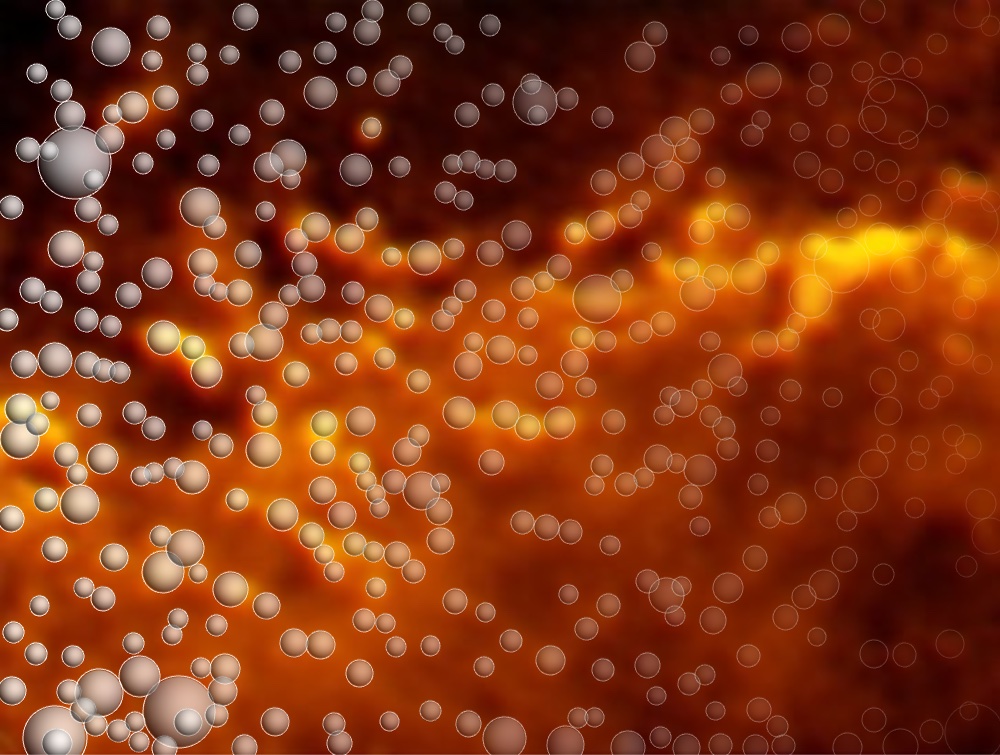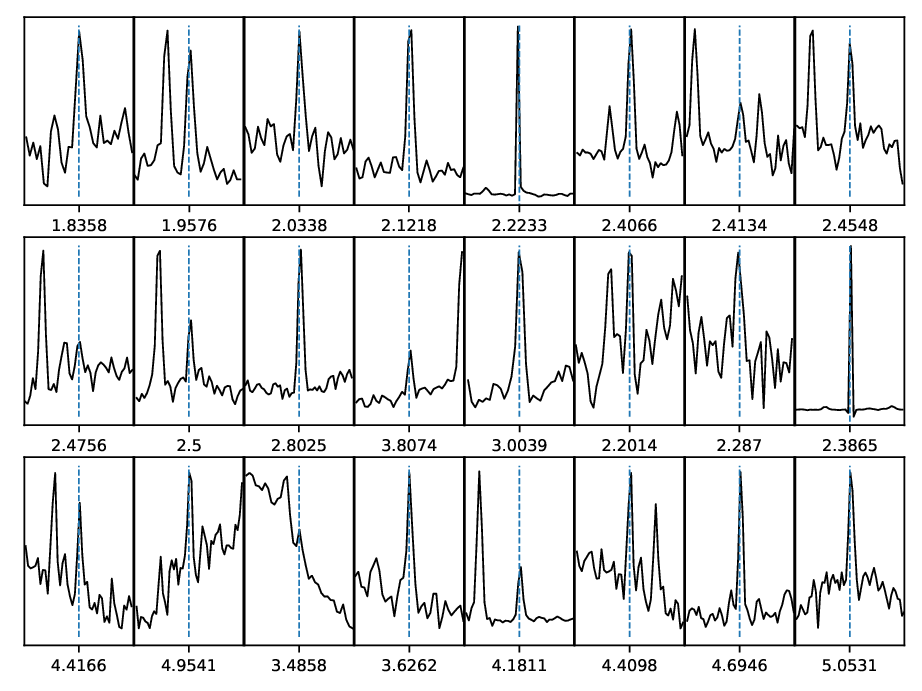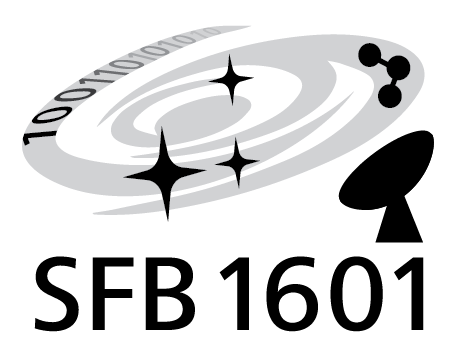Project leader: Ossenkopf-Okada, Volker (PH1)

Project A6 plans to improve our understanding of the physics of photon-dominated regions (PDRs), this means interstellar clouds where the UV radiation from young massive stars creates a characteristic chemistry and excitation in the medium. Based on models we will try to derive the properties of the usually deeply embedded young stars from the observable radiative signatures at infrared and radio wavelengths. Understanding the PDR physics allows us to interpret the observations of the main cooling and additional diagnostics lines as a tool to measure the impinging UV field produced by short-living O- and B-type stars.
Major questions to be solved are the role and distribution of PAHs and very small dust grains and the details of the H2 formation and excitation in the ISM. For both aspects we expect revolutionising new observational constraints from JWST spectroscopy. At the same time a better understanding of the dust physics in PDRs is a prerequisite to interpret the spatially unresolved observations of PDR tracers at high redshifts.
Based on the long-term experience in Cologne with clumpy PDR modelling, we plan to implement a versatile framework to fit observations of any highly complex UV-dominated structure by clump ensembles using the KOSMA-tau-3D approach. A major work package covering the whole CRC time frame is the development of efficient and specific tools for the comparison of the large observational data sets, with the model predictions taking the full set of lines and continuum data, the spatial structure, and the velocity profiles into account.
By answering the PDR-specific question: Which observational signatures, which lines and chemical tracers are reliable measures of the local UV radiation across different galaxies and cosmic times? we provide tools so that CRC 1601 can address the question: How can we actually measure the star-formation rate across the universe?

Publications
2025
Tight correlation of star formation with [CI] and CO lines across cosmic time Journal Article
In: A&A, vol. 701, pp. A288, 2025.
Expansion Signatures in 35 H II Regions Traced by SOFIA [C II] Emission Journal Article
In: Astrophysical Journal, vol. 990, no. 1, pp. 30, 2025.
The Diamond Ring in Cygnus X: Advanced stage of an expanding bubble of ionised carbon Journal Article
In: arXiv e-prints, pp. arXiv:2509.22427, 2025.
The HI-to-H2 transition in the Draco cloud Journal Article
In: Astronomy & Astrophysics, no. aa55308-25corr, pp. 2025A&A...699A.354S, 2025.
A Comparative Study of the Ground State Transitions of CO and C I as Molecular Gas Tracers at High Redshift Journal Article
In: Astrophysical Journal, vol. 987, no. 2, pp. 158, 2025.
Expansion Signatures in 35 HII Regions traced by SOFIA [CII] Emission Journal Article
In: arXiv e-prints, pp. arXiv:2506.16700, 2025.
Extended atomic carbon around molecular clouds Journal Article
In: arXiv e-prints, pp. arXiv:2503.04967, 2025.
2024
Molecular cloud matching in CO and dust in M33: II. Physical properties of giant molecular clouds Journal Article
In: A&A, vol. 692, pp. A226, 2024.
Bright-rimmed clouds in IC 1396: I. Dynamics Journal Article
In: A&A, vol. 690, pp. A45, 2024.
In: A&A, vol. 690, pp. A294, 2024.
Molecular Cloud Matching in CO and Dust in M33 I. High-Resolution Hydrogen Column Density Maps from Herschel Journal Article
In: arXiv e-prints, pp. arXiv:2406.03601, 2024.
First detection of the [CII] 158 micron line in the intermediate-velocity cloud Draco Journal Article
In: Astronomy and Astrophysics, 2024.
- Andree-Labsch, Ossenkopf-Okada, and Röllig, “Modelling clumpy photon-dominated regions in 3D. Understanding the Orion Bar stratification”, A&A 598, A2 (2017).
- Röllig, Szczerba, Ossenkopf, and Glück, “Full SED fitting with the KOSMA- τ PDR code. I. Dust modelling”, A&A 549, A85 (2013)
- Röllig, Simon, Güsten, Stutzki, Israel, and Jacobs, “[C II] 158 μ m and [N II] 205 μ m emission from IC342. Disentangling the emission from ionized and photo-dissociated regions”, A&A 591, A33 (2016).
- Röllig and Ossenkopf-Okada, “The KOSMA- τ PDR model. I. Recent updates to the numerical model of photo-dissociated regions”, A&A 664, A67 (2022).
